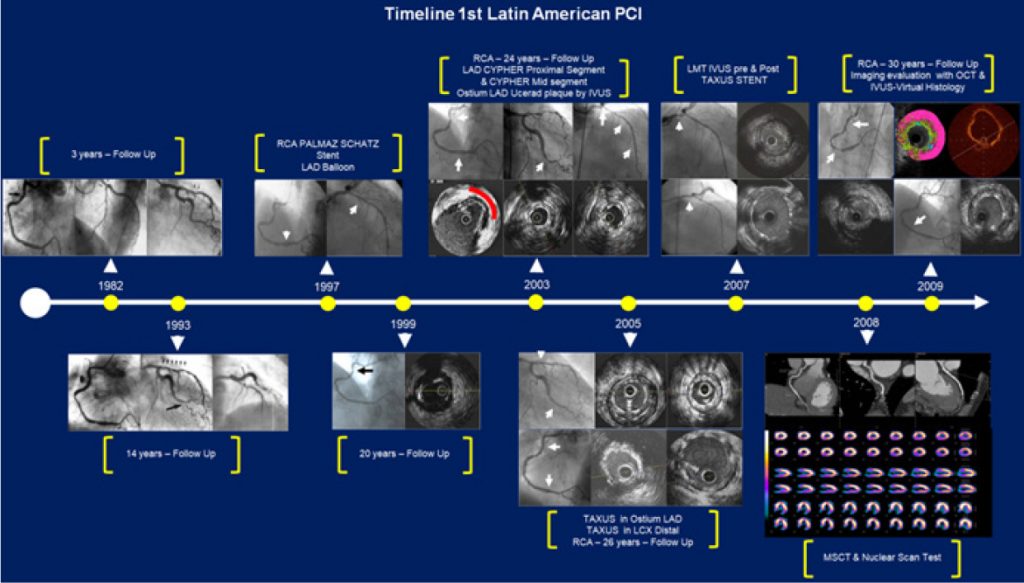Arq. Bras. Cardiol. 2021; 116(5): 1007-1010
The Evolution of Percutaneous Coronary Intervention in Latin America
In August 1979, two years and one month after the first percutaneous coronary intervention (PCI) was performed in the world by Andreas Grüntzig, we received at Santa Casa de Misericordia in Curitiba (SCMC) a 55-year-old male patient (A.S.O.) with Canadian Cardiovascular Society (CCS) class 2 stable angina. Coronary angiography showed a severe (75-80 DS%) lesion in the middle segment of the Right Coronary Artery (RCA). The left coronary artery system did not have any significant atherosclerotic lesion and the left ventriculogram showed mild inferior wall hypokinesia with competent mitral and aortic valves.
That was the opportunity to put into practice the technique described by Gruntzig et al. for the first time in Latin America. The clinical presentation and the angiographic characteristics of the lesion met all the criteria described by Gruntzig: Single lesion, short length (<10mm), proximal arterial segment, without vasospasm, concentric, non-calcified and feasible for CABG. Thus, after discussing it with the clinical and cardiovascular surgery staff, it was decided to propose the dilation of the RCA obstruction to the patient as an attempt to treat his coronary disease.
[…]
1,191

